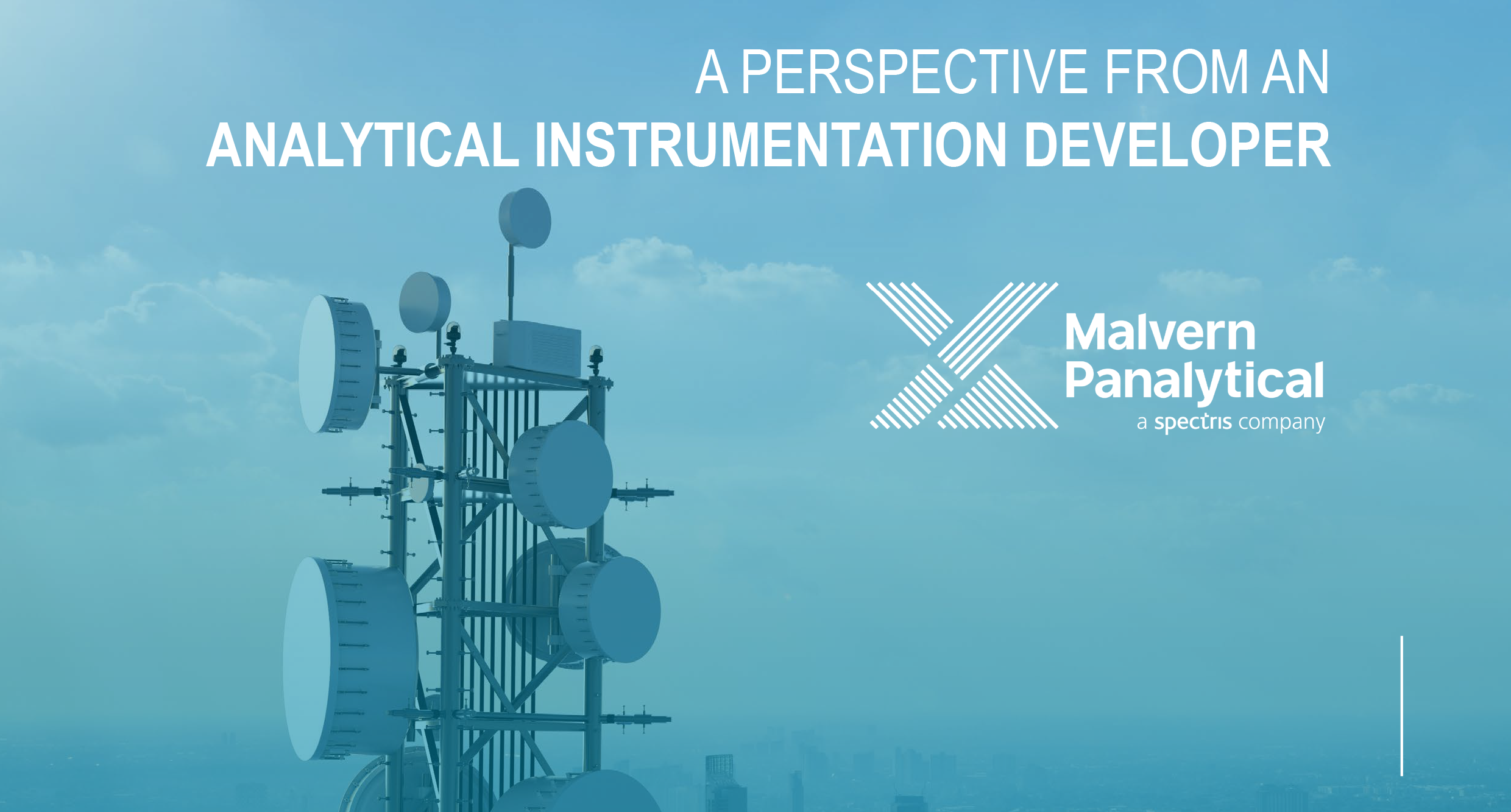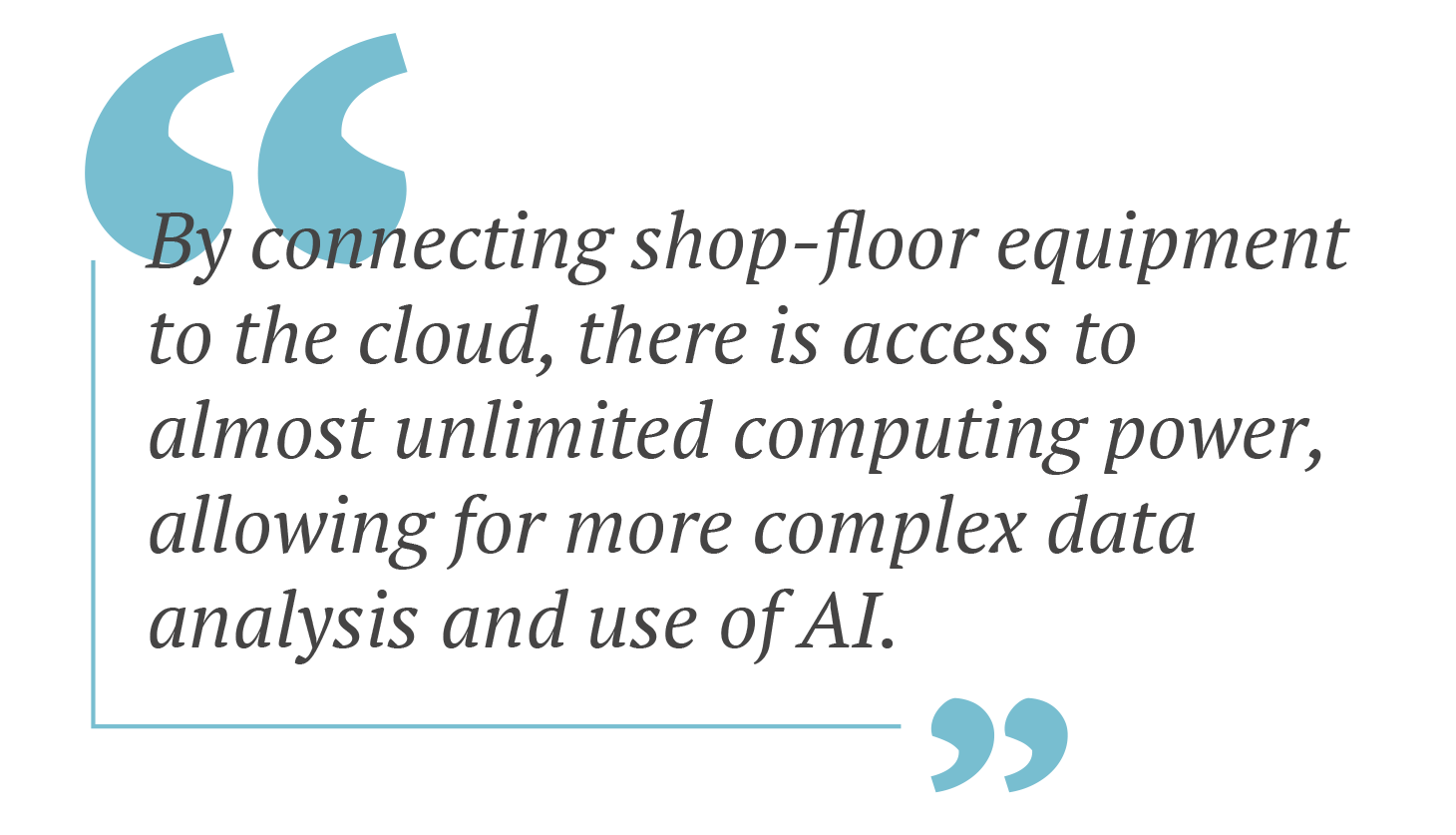CONNECTIVITY IN LABORATORIES
AND ON THE PRODUCTION FLOOR


Connectivity on the shop floor is increasing
The manufacturing industry is undergoing a digital transformation that promises to improve efficiency, productivity and customer satisfaction. Malvern Panalytical is experiencing increasing demand for digital solutions, which require cloud connectivity for instruments in laboratories and on the production floor. Two key reasons for the interest in cloud connectivity are the ability for remote or location independent working and monitoring, and access to large-scale computing.
Remote access to data has recently gained importance because of the COVID-19 pandemic. Remote working has become more prevalent. Therefore, it has become more important to be able to track key parameters relating to production quality, independent of the location of the scientist responsible.
An additional benefi t is that experts – for example, service engineers – can monitor instrument performance remotely and in real-time, hereby fl agging potential issues before they occur, and preventing unexpected downtime.
Another advantage lies with the increased ability to get intelligence from local data. By connecting shopfloor equipment to the cloud, there is access to almost unlimited computing power, allowing for more complex data analysis and use of AI. Data from multiple sources can be combined and predictions can be made; for example, on the performance or lifetime of a product, early in the manufacturing process, to avoid costly waste or failures further along the line.

Challenges of connectivity
As with any technological change, connectivity also comes with a set of challenges. Two subjects to consider are security and reliability. As more devices and systems are connected to the internet, they become more vulnerable to cyberattacks that can compromise data integrity, privacy, and functionality. Strong encryption, authentication, and access control mechanisms are needed to protect data and devices from unauthorized access or manipulation. Processes must be in place to monitor and update network security regularly to mitigate or prevent potential attacks.
As we move forward in capitalizing on the power of connectivity, there will also be more dependency on remote resources, both human and digital. Any disruption or delay in connectivity can result in costly downtime, quality issues or safety risks. These risks can be mitigated by ensuring that network infrastructure is robust, resilient, and reliable; capable of handling high volumes of data and traffic without compromising on performance.
Opportunities connecting analytical instrumentation
Many aspects of our modern world have been created or improved by fi rst understanding their fundamental chemical, physical or structural make-up – whether that’s developing vaccines, making stronger and more sustainable concrete, monitoring soil and water quality, or making chocolate and coff ee taste even better. Technologies developed by Malvern Panalytical allow industries and researchers to understand the world, from biomolecular structures to quantum dots. The portfolio of scientific instrumentation covers a broad range of technologies, including particle size analysis, X-ray fluorescence, and X-ray diff raction.
Many of Malvern Panalytical’s systems operate in 24/7 environments; for example, in quality control for manufacturing. Operating high-tech, complex equipment within such demanding settings presents stringent requirements for robustness and performance. By viewing instruments as part of a bigger, interconnected system, the doors are opened to digital opportunities that help ensure instruments’ performance and provide a new range of workfl ow optimizations.
Malvern Panalytical’s connectivity solution: Smart Manager
Cloud connectivity allows the industry to solve existing problems in new ways. Smart Manager was developed by Malvern Panalytical to connect its analytical instrumentation to the cloud through secure and reliable Internet of Things (IoT) infrastructure. With this solution, Malvern Panalytical can help customers get the most out of their instruments. Potential issues can be detected through proactive and predictive monitoring services, and solved before any downtime occurs. Additionally, customers can manage their fl eet of instruments remotely, optimizing utilization and gathering instrument performance data across diff erent production processes and plants.
Beyond getting the most out of the instrument, Smart Manager is the gateway to access more valuable data generated during manufacturing processes. In many cases, most of this data is left unused. Exposing this data to analysis and machine learning, and combining it with known models, libraries, or other data sources, allows benefi ts such as increased crop yields, optimized workfl ows in medicine development, and reduced waste and shortened production times in battery manufacturing.
At Malvern Panalytical, we see that the digital journey is just starting. We would like to call on you to contact us to
engage in mutual learning opportunities and further explore the possibilities and challenges along this transformation journey.